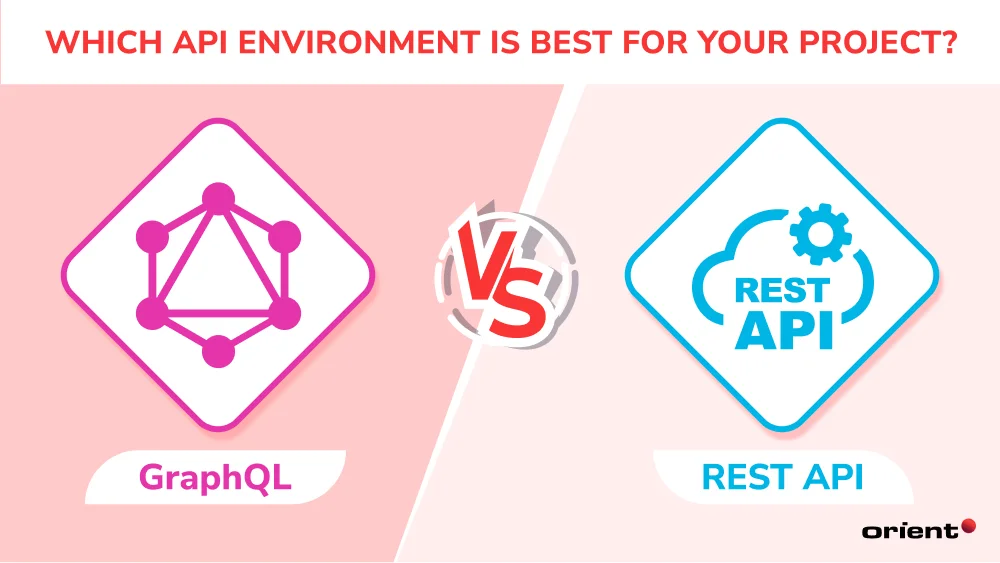Introduction
Think of modern application development as constructing a sprawling city. The skyscrapers are your frontends, the underground tunnels represent your databases, and the roadways are your APIs—connecting every corner, ensuring goods and information move smoothly. In this city, engineers are more than just builders; they are city planners, ensuring each avenue, street, and alley aligns with long-term growth. This metaphor captures what developers navigate when choosing between GraphQL and REST APIs: the difference lies not in the destination but in how traffic flows through their carefully designed streets.
REST: The Classic Highway System
REST APIs are like well-marked highways built decades ago. Each route has a signpost, a clear destination, and predictable lanes. For example, a /users endpoint is like a dedicated lane heading straight toward all user data. The system works beautifully when traffic is light and destinations are clear. However, as cities grow, multiple stops become necessary. A car might need to hop across several exits to gather all the supplies—mirroring the multiple calls developers must make to different endpoints when piecing together complex data. In practice, REST is robust, reliable, and familiar, but it can feel like taking the long road home when projects demand agility.
GraphQL: The High-Speed Metro
GraphQL, in contrast, resembles a sleek underground metro system. Instead of stopping at every junction, passengers can ride directly to their chosen destination. Developers can query precisely what they need—no more, no less—avoiding the inefficiencies of over-fetching or under-fetching data. This single endpoint functions like a central hub, where trains branch out instantly to all parts of the city. The result is efficiency, speed, and flexibility. Yet, like building a metro system, GraphQL requires upfront planning and specialised knowledge. Engineers must map queries carefully, ensuring the metro doesn’t get congested or overloaded during peak demand.
Balancing Complexity and Simplicity
The choice between REST and GraphQL often comes down to the balance between simplicity and flexibility. REST thrives in projects where predictability matters—its standardised endpoints reduce ambiguity, making onboarding straightforward for teams. GraphQL shines where clients demand tailored responses, such as mobile applications that need optimised payloads to conserve bandwidth. Imagine running a food delivery app: REST would give you the whole menu every time, while GraphQL would let you order just the single dish you’re craving. For learners in a Full Stack Development Course, understanding when to choose highways versus metros is critical—each transport system has strengths that fit different urban landscapes.
Performance and Real-World Demands
In real-world deployments, performance considerations become decisive. REST’s simplicity reduces overhead, but repeated network calls can slow apps under heavy traffic. GraphQL’s single query model minimises requests but shifts the complexity to servers, which must handle diverse queries with precision. Businesses operating at scale—think streaming platforms or fintech apps—often test both to see which aligns with their infrastructure. When guided by structured learning, such as a Full Stack Development Course, professionals gain the insight to analyse trade-offs, making informed decisions instead of following trends blindly. This ability to adapt ensures that projects remain both performant and sustainable.
Security and Governance
Every transport system has rules. REST relies on established methods like GET, POST, and DELETE, making security governance more straightforward. Developers can apply consistent authentication and caching strategies without much customisation. GraphQL, however, operates with greater flexibility, but that flexibility comes with responsibility. A poorly designed query could overwhelm servers, exposing vulnerabilities. Teams must therefore establish clear rules, query depth limits, and monitoring systems. Choosing wisely isn’t just about speed—it’s about ensuring the city stays safe, even as it scales.
Conclusion
GraphQL and REST are not adversaries but tools in the same developer’s toolkit. REST offers the predictability of highways; GraphQL brings the agility of metros. The real art lies in knowing which transport system best serves your city of code. Projects focused on rapid scaling and diverse client demands may find GraphQL indispensable, while simpler systems thrive with REST’s clarity. For professionals learning to plan and maintain this digital cityscape, mastering both approaches is essential. With practice and the right guidance, developers evolve into architects capable of keeping their digital cities thriving, no matter how complex the map becomes.
